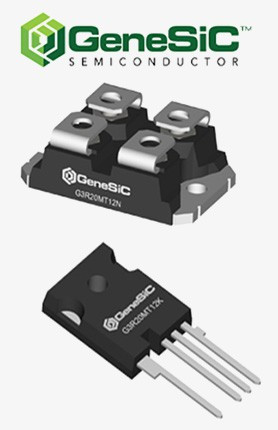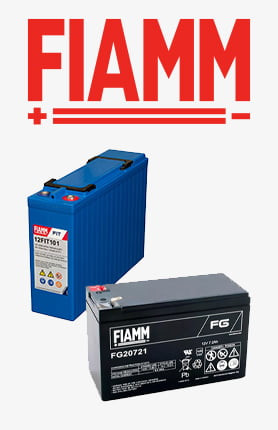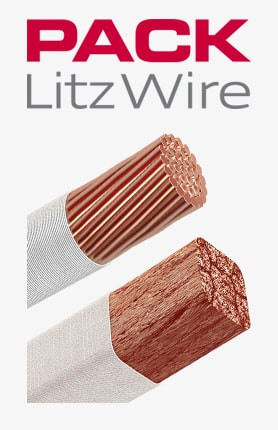trebuie să fii logat
-
întoarce-teX
-
Componente
-
-
Category
-
Semiconductoare
- Diode
- tiristoare
- Module izolate electric
- Redresoare în punte
-
Tranzistoare
- tranzistoare GeneSiC
- Module MOSFET Mitsubishi SiC
- Module MOSFET STARPOWER SiC
- Module MOSFET ABB SiC
- Module IGBT de la MITSUBISHI
- Module de tranzistori MITSUBISHI
- module MITSUBISHI MOSFET
- Module de tranzistori ABB
- Module IGBT de la POWEREX
- Module IGBT - de la INFINEON (EUPEC)
- Elemente semiconductoare din carbură de siliciu
- Accesați subcategoria
- Șoferii
- Blocuri de putere
- Accesați subcategoria
- Traductoare de curent și tensiune LEM
-
Componente pasive (condensatori, rezistențe, siguranțe, filtre)
- Rezistoare
-
Siguranțe
- Siguranțe miniaturale pentru sisteme electronice din seria ABC și AGC
- Siguranțe tubulare cu acțiune rapidă
- Inserții întârziate cu caracteristici GL/GG și AM
- Legături sigure ultra-rapide
- Siguranțe standard britanice și americane cu acțiune rapidă
- Siguranțe cu acțiune rapidă standard european
- Siguranțe de tracțiune
- Siguranțe de înaltă tensiune
- Accesați subcategoria
-
Condensatoare
- Condensatoare pentru motoare
- Condensatoare electrolitice
- Condensatori Icel Film
- Condensatoare de putere
- Condensatoare pentru circuite DC
- Condensatoare de compensare a puterii
- Condensatoare de înaltă tensiune
- Condensatoare pentru încălzire prin inducție
- Condensatoare de impulsuri
- Condensatoare DC LINK
- Condensatoare pentru circuite AC/DC
- Accesați subcategoria
- Filtre anti-interferențe
- Supercondensatoare
- Protecție la supratensiune
- Filtre de emisii revelatoare TEMPEST
-
Descărcător de supratensiune
- Descărcătoare de supratensiune pentru rețeaua de curent alternativ
- Descărcătoare de supratensiune pentru rețea de curent continuu
- Limitatoare de joasă tensiune ALVL
- Limitatoare de joasă tensiune PG
- Descărcătoare de trăsnet pentru rețele de curent alternativ până la 1000V
- Dispozitive de măsurare
- Accesați subcategoria
- Accesați subcategoria
-
Relee și Contactoare
- Teoria releelor și contactoarelor
- Relee cu stare solidă trifazată CA
- Relee cu stare solidă DC
- Regulatoare, sisteme de control și accesorii
- Porniri ușoare și contactoare inversoare
- Relee electromecanice
- Contactoare
- Comutatoare rotative
-
Relee cu stare solidă CA monofazate
- Relee cu stare solidă CA monofazate Seria 1 | D2425 | D2450
- Relee semifazate CA monofazate, seria CWA și CWD
- Relee semifazate CA monofazate seriile CMRA și CMRD
- Relee cu stare solidă CA monofazate Seria PS
- Relee cu stare solidă AC seria duble și cvadruple D24 D, TD24 Q, H12D48 D
- Relee monofazate din seria GN
- Relee cu stare solidă CA monofazate Seria CKR
- Relee monofazate pentru șină DIN AC SERIA ERDA și ERAA
- Relee AC monofazate pentru curent de 150A
- Relee duble cu stare solidă integrate cu radiator pe șină DIN
- Accesați subcategoria
- Relee cu stare solidă imprimabile monofazate CA
- Relee de interfață
- Accesați subcategoria
- Miezuri și alte componente inductive
- Radiatoare, Varistoare, Protectie termica
- Fani
- Aer conditionat, Accesorii tablou, Racitoare
-
Baterii, încărcătoare, surse de alimentare tampon și convertoare
- Baterii, încărcătoare - descriere teoretică
- Baterii litiu-ion. Baterii personalizate. Sistem de management al bateriei (BMS)
- baterii
- Incarcatoare de baterii si accesorii
- UPS și surse de alimentare tampon
- Convertoare si accesorii pentru fotovoltaice
- Stocarea energiei
- Pile de combustibil cu hidrogen
- Celule litiu-ion
- Accesați subcategoria
-
Automatizare
- Elevatoare Spiralift
- Piese pentru drone Futaba
- Întrerupătoare de limită, Micro întrerupătoare
- Senzori, traductoare
- Pirometre
- Contoare, relee de timp, contoare de panou
- Echipament industrial de protectie
- Semnale luminoase și sonore
- Cameră termică
- Afișaje LED
- Butoane și întrerupătoare
- Accesați subcategoria
-
Cabluri, fire Litz, Conduite, Conexiuni flexibile
- Firele
- Presetupe și manșoane
- Chipurile
-
Cabluri pentru aplicatii speciale
- Cabluri de prelungire și compensare
- Cabluri de termocuplu
- Cabluri de conectare pentru senzori PT
- Cabluri cu mai multe fire de temperatură. -60°C până la +1400°C
- Cabluri de medie tensiune SILICOUL
- Cabluri de aprindere
- Cabluri de incalzire
- Cabluri cu un singur conductor temp. -60°C până la +450°C
- Fire de cale ferată
- Cabluri de încălzire în ex
- Cabluri pentru industria de apărare
- Accesați subcategoria
- tricouri
-
Impletituri
- Impletituri plate
- Impletituri rotunde
- Impletituri foarte flexibile - plate
- Impletituri foarte flexibile - rotunde
- Impletituri cilindrice de cupru
- Impletituri si capace cilindrice din cupru
- Curele flexibile de împământare
- Impletituri cilindrice din otel zincat si inoxidabil
- Impletituri de cupru izolate PVC - temperatura de pana la 85 de grade C
- Impletituri plate din aluminiu
- Kit de conectare - impletituri si tuburi
- Accesați subcategoria
- Echipament de tracțiune
- Capse de cablu
- Sine flexibile izolate
- Sine flexibile multistrat
- Sisteme de management al cablurilor
- Accesați subcategoria
- Vezi toate categoriile
-
Semiconductoare
-
-
- Furnizori
-
Aplicații
- Automatizare HVAC
- Automatizare industrială
- Băncile de energie
- Cercetare si masuratori de laborator
- Componente pentru zonele cu pericol de explozie (EX)
- Echipament industrial de protectie
- Echipamente pentru dulapuri de distributie si control
- Exploatare minieră, metalurgie și turnătorie
- Imprimare
- Încălzire prin inducție
- Inginerie energetică
- Mașini CNC
- Masini de sudura si sudori
- Mașini de uscare și prelucrare a lemnului
- Masini pentru termoformarea materialelor plastice
- Măsurarea și reglarea temperaturii
- Motoare si transformatoare
- Surse de alimentare (UPS) și sisteme redresoare
- Tracțiune cu tramvai și feroviar
- Unități DC și AC (invertoare)
-
Instalare
-
-
Inductori
-
-
Dispozitive de inducție
-
-
Serviciu
-
- Kontakt
- Zobacz wszystkie kategorie
Cele mai bune practici pentru ecranarea componentelor pe PCB pentru EMC: Cum să minimizați interferențele electromagnetice

Best Practices for Shielding Components on PCBs for EMC: How to Minimize Electromagnetic Interference
Introduction to the Topic
With the growing demands for electromagnetic compatibility (EMC), designing printed circuit boards (PCBs) is becoming increasingly complex. Shielding is a key technique that protects electronic components from electromagnetic interference (EMI). In this article, we discuss the main challenges and best practices related to designing shielding for PCB components in terms of EMC.
The electronics market is undergoing dynamic changes, and with the increasing number of wireless devices and consumer electronics, electromagnetic compatibility (EMC) has become a critical aspect of design. Electronic devices, from smartphones to advanced medical and automotive systems, must meet strict EMC standards to ensure safe and efficient operation. The rapid development of technologies such as 5G, the Internet of Things (IoT), and wearable electronics contributes to the growing number of devices that operate at higher frequencies. This, in turn, increases susceptibility to electromagnetic interference (EMI).
In 2023, the global electromagnetic shielding market reached a value of $7 billion, highlighting the growing importance of this technology. It is estimated that by 2030, the market value will increase by another 50%, driven by the growing number of applications that require EMC compliance. Companies must invest in advanced shielding techniques to meet these demands. A lack of proper shielding can lead to device compatibility issues and negatively affect their performance and reliability.
History and Origins of the Issue
Problems related to electromagnetic interference date back to the early use of radio technologies in the early 20th century. The first radio communication systems were particularly susceptible to interference caused by other sources of electromagnetic radiation. As electronics and telecommunications developed, engineers began to notice that these interferences could significantly impact signal quality and device reliability. Even then, the first steps were taken to protect systems from EMI, mainly through the use of proper grounding and signal isolation techniques.
In the 1970s, with the rapid growth in the number of electronic devices, the problem of electromagnetic interference became more common and serious. Companies such as Bell Laboratories began conducting intensive research on methods of protection against EMI. The introduction of the first EMC-related regulations, such as the MIL-STD-461 standards for military equipment, forced manufacturers to design devices with shielding in mind.
In the 1980s and 1990s, the development of microprocessor technologies and digital devices further increased the need for EMC compliance. More advanced techniques, such as the Faraday cage, and dedicated shielding materials began to be widely used in the industry. From that moment on, electromagnetic shielding became a standard element of electronic circuit design, especially for devices operating at high frequencies.
Today, shielding techniques and electromagnetic interference management are integral parts of the electronics industry, especially in the context of emerging 5G technologies, IoT, and the automotive industry, where autonomous and electric systems are becoming increasingly common.
Key Challenges and Problems
Miniaturization and Design Complexity
With the ongoing miniaturization of electronic devices, designers face the challenge of efficiently placing components in limited space. The smaller the size of the PCB, the harder it is to maintain proper distance between interference-emitting elements and sensitive components. When designing analog, digital, and power systems, it is especially important to avoid mutual interference. Improper component placement can lead to interference, which affects device stability.
Managing the Ground Plane
A uniform, unbroken ground plane is the foundation for designing PCBs that are resistant to electromagnetic interference. The ground plane plays a key role in absorbing conducted interference. However, designing multi-layer PCBs, especially for complex devices like cell phones or medical equipment, can lead to discontinuities in the ground plane. Vias can further introduce problems with conducted interference if they are not properly placed and grounded.
Ground Loops and Conducted Interference
Ground loops are a common problem in multi-layer devices. They occur when different sections of the board have different ground potentials, leading to conducted interference. Signals that flow through these loops can cause interference between components. To prevent this phenomenon, designers must carefully plan grounding and signal paths to minimize the risk of such loops.
Shielding Material
Choosing the right shielding materials plays a key role in ensuring effective protection against EMI. Materials such as copper, aluminum, and stainless steel have different conductivity and interference attenuation properties. Copper, due to its excellent conductivity, is most commonly used, especially in high-performance designs. Stainless steel, though cheaper, offers poorer interference attenuation and is used in less demanding applications. The high frequencies at which today's devices operate require the use of more advanced materials and techniques, such as multi-layer shielding coatings.
Radiated Interference
Radiated interference can penetrate key components such as microprocessors, oscillators, or radio modules. Especially in IoT devices, which often operate in high-EMI environments, it is important for designers to use proper shielding and signal isolation techniques. The high operating frequencies of such devices, reaching even tens of GHz, mean that standard shielding techniques may not be sufficient. In such cases, the use of special shielding materials and precise circuit design becomes essential.
Best Practices and Design Techniques
Isolation of Analog and Digital Signals
One of the most important aspects of designing EMC-compliant PCBs is the proper separation of analog and digital signals. High-frequency digital signals can introduce interference into analog signal paths, affecting measurement accuracy and device stability. Therefore, it is recommended that, where possible, analog and digital sections be placed on different layers or physically separated on the board.
Proper Placement of Vias
Vias are often used in multi-layer designs, but improper placement can lead to conducted interference. To avoid this, vias should not be placed near sensitive components and should be introduced symmetrically to minimize potential differences on the ground plane.
Using EMI-Absorbing Materials
EMI-absorbing materials, such as ferrite beads and films, can significantly reduce the electromagnetic radiation generated by components. Especially in high-density devices, where space is limited, these materials can be used in places where standard shielding techniques are difficult to implement.
Designing Low-Impedance Connectors
Low-impedance connectors, such as coaxial connectors, provide effective protection against interference. They are especially important in high-frequency connections, where even small impedance differences can lead to signal reflections and interference. Choosing the right type of connector, along with its precise placement, can significantly improve the EMC compliance of the entire system.
Conclusion
Designing EMC-compliant PCBs requires a comprehensive approach that considers both the selection of appropriate materials and design techniques. Miniaturization, high operating frequencies, and the complexity of modern electronic devices make EMC compliance an increasingly challenging task. Using best practices, such as shielding, proper placement of vias, and signal isolation, minimizes the risk of interference and ensures the reliability and safety of device operation.
Related posts
 Now available – DC/DC converters from PREMIUM
Now available – DC/DC converters from PREMIUM
 New release in DACPOL lighting for lathes – Kira covers
New release in DACPOL lighting for lathes – Kira covers




Leave a comment